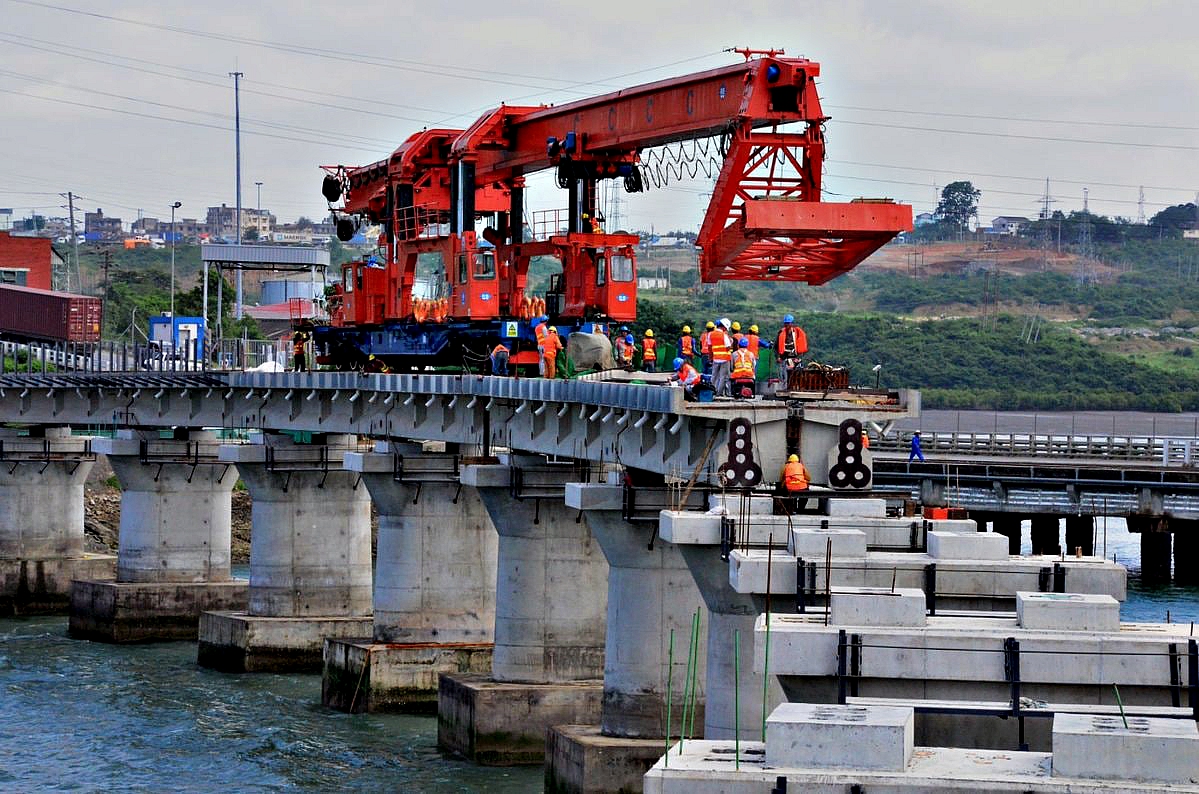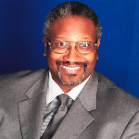A Diaspora View of Africa
Infrastructure is the key to Africa’s growth


By Gregory Simpkins
The Corporate Council on Africa recently hosted a briefing in Washington by United Nations High Representative for Infrastructure. Raila Odinga, a Kenyan politician and statesman, made a case that there was a realization on the continent that development plans, especially enhanced intra-Africa trade, could not be implemented without significant upgrades in various forms of infrastructure. Odinga said that intra-Africa trade (which he estimated to be about 15 percent) lagged significantly behind that of other global regions, including those with numerous developing countries.
There are various reasons why the disconnect of African infrastructure took place. The one most often cited is that the European colonial powers carved out protectorates separate from their rivals. This meant social amenities such as roads, air travel primarily benefit the colonial power in control. This has resulted in neighboring countries not having roads or air links without going through third countries or even through Europe.
Odinga cited an example of how skewed the infrastructure disconnect really is. He said that for exports from his country Kenya to the Central African Republic (CAR), they would have to be taken by ship around the Cape of Good Hope dock in a nearby port and then be transported by road to CAR. It is worth noting that Kenya is separated on land from CAR by parts of Uganda and the Democratic Republic of the Congo (DR Congo), but due to lack of road networks, this cargo would have to be taken to the other side of the continent – a trip that adds significant time and cost to the shipment. Neither the British, French or Belgian colonialists thought it in their interest to make transportation between these countries more possible. Stories like this add to the challenges of intra-Africa trade.
Another issue Odinga mentioned was corruption. Still exemplifying the case of road transportation, government officials sometimes either ask for more funds than is required or account for less than they have received from the government. It also sometimes leads to a proliferation of stops with official or unofficial tolls. Many female traders who do cross-border business can attest that, tolls are not always collected in cash from them, which makes their trade much more perilous than it needs to be and seriously impacts the informal sector of most African economies that is dominated by women.
Then there is also competition or cross-border rivalries that interfere with cooperation needed to facilitate transportation links or other mutually beneficial linkages for regional projects. Odinga cited the difficulties in establishing renovation of the bridge between Brazzaville in Republic of the Congo, and Kinshasa in the DR Congo. The port of Pointe-Noire in the Republic of Congo is deep-water, allowing it to receive ships of all sizes, while the port of Matadi in the DR Congo is not deep-water. Officials in DR Congo reportedly see an expanded bridge between the two countries as favoring shipping to the Republic of Congo, but that is a reality of the situation until Matadi can become deep-water or until a new deep-water port in the DR Congo can be developed.
Closely related to that is protectionism. Designed to ostensibly to protect so-called “infant industries” that would not be able to develop against competition from outside firms, over-protection has frustrated many public-private partnerships and foreign investments. In reality, the protectionist schemes more likely help the businesses of well-connected elites.
However, there has been progress in some countries in enhancing African infrastructure. The second continental report on the implementation of Agenda 2063, released in February 2022 by the African Union Development Agency – New Partnership for Africa’s Development (NEPAD) – which manages its implementation of this AU plan, cited advancements in the 6 areas on which it focuses:
Trans-African Highway missing links
The report stated that the aggregate performance of the continent rose from 8.12 percent in 2013 to 19.38 percent in 2021, although it still fell far below the expected 2021 target value of 81.6 percent. In 2020, Kenya recorded 80 percent completion of the Trans-African Highways Missing Link within Kenya – a notable progress from 30 percent in 2013. The completion rate in Senegal was recorded at 60 percent in 2020, attributed to the finalization of the Dakar-Abidjan coastal corridor that stretches from Dakar (Senegal) to Abidjan (Côte d’Ivoire), crossing The Gambia, Guinea Bissau, Guinea, Sierra Leone and Liberia. The African Development Bank (AfDB) has been instrumental in advancing Africa’s infrastructure development.
African Integrated High-Speed Railway Network
The continental-level score on the status of readiness for implementation was recorded at 12.3 percent in 2021. The progress, while falling far below the 2021 target value of 100 percent, is attributed to efforts made by some countries. For example, Senegal registered a 43 percent completion rate of the African Integrated High-Speed Railway Network, while Kenya increased the railway’s share from 5 percent to 50 percent of cargo freight from the port of Mombasa.
Population using mobile phones
The proportion of the population using mobile phones in Africa increased from 39.8 percent in 2013 to 68.8 percent in 2021, registering a 91 percent performance against the 2021 target. Overall, most countries exhibited remarkable increases in this domain. For example, Togo recorded a significant leap in the proportion of the population using mobile phones, rising from 55.87 percent in 2013 to 83.59 percent in 2020. In Uganda, the proportion of households owning mobile phones increased from 55.7 percent in 2013 to 74.0 percent in 2020, while in Namibia, the proportion of the population using mobile phones jumped from 52.6 percent in 2013 to 93 percent in 2020. Similarly, Chad recorded 74 percent of its population using mobile phones.
Percentage of ICT contribution to GDP
During the period under review (2013-2020), Africa saw an increase in the contribution of ICT to GDP, rising from 5.12 percent in 2013 to 7.23 percent in 2020. For example, in line with the ICT infrastructure objectives of the National ICT Policy, Seychelles rolled out of its first submarine cable – the Seychelles East Africa Submarine (SEAS) cable – which is connected to Dar-es-Salaam, Tanzania. The laying of SEAS has boosted Internet usage, mainly with the decrease in price per gigabyte for Internet usage and an increase in Internet speed. This also has led to the establishment of many businesses and utilization of the platform for service delivery by the private sector and government.
Single African air transport market
Africa has made significant progress towards signing the Solemn Commitment to create a single unified air transport market as part of efforts to foster the free movement of people and goods on the continent. By end of 2020, 35 countries, representing 64 percent of the total membership of the African Union had signed the solemn commitment to join the Single African Air Transport Market (SAATM). These countries are Benin, Botswana, Burkina Faso, Cape Verde, Cameroon, Central African Republic, Congo, Côte d’Ivoire, Chad, DR Congo, Egypt, Ethiopia, Equatorial Guinea, Eswatini, Gabon, The Gambia, Ghana, Guinea, Guinea Bissau, Kenya, Lesotho, Liberia, Mali, Morocco, Mozambique, Namibia, Niger, Nigeria, Rwanda, Senegal, Sierra Leone, South Africa, Togo, Zambia and Zimbabwe.
Additional megawatts to the national grid
Efforts are underway to develop a Continental Energy Transmission Masterplan, with the participation of all Power Pools. The Masterplan will enable coordinated generation and distribution of power in Africa. Relatedly, the continent has seen a remarkable increase in overall electricity generation, rising from 16,144 megawatts (MW) in 2013 to 31,690 MW in 2021. Similarly, AU member states have significantly increased the number of megawatts to their national grids. For example, Senegal added 234.5 MW while Rwanda and Sierra Leone added 238.4 and 67 MW of electricity respectively to their national grid over the last two years. Egypt and Côte d’Ivoire recorded an additional 3,140 MW and 275 MW of electricity respectively during the same period. Sudan and Djibouti are linked with power grids importing electricity from Ethiopia. Furthermore, the construction of the Ethiopia-Kenya electricity highway is in advanced stages.
In his presentation, Mr. Odinga cited several ambitious infrastructure projects he said were ready to be implemented. However, there were questions regarding bankability of such projects. This actually is the major hitch in getting these projects funded, despite potential funding not only from institutions such as the African Development Bank and African Export-Import Bank, but also pensions funds, insurance funds and sovereign wealth funds, not to mention such sources as toll on roadways. What project managers consider bankability is too often not what those with funds to invest see in those projects.
Those seeking investment – African infrastructure projects and indeed African companies – must look at things from the point of view of the investor in question. After all, this is business, not charity and involves tremendous amounts of money that must be accounted for. What does the investor want in return for its investment in this project? How secure will their investment be? Are the conditions outside the project itself conducive to stability and successful performance?
This realization is becoming more widespread in Africa, which gives hope that this particular disconnect can be resolved, allowing African infrastructure to be completed as planned.
Gregory Simpkins, a longtime specialist in African policy development, is the Principal of 21st Century Solutions. He consults with organizations on African policy issues generally, especially in relating to the U.S. Government. He also serves as Managing Director for the Morganthau Stirling consulting firm, where he oversees program development and implementation. He further acts as consultant to the African Merchants Association, where he advises the Association in its efforts to stimulate an increase in trade between several hundred African Diaspora small and medium enterprises and their African partners.

